Berube's impact on Leafs, Kent Johnson breakout SZN, and 5 other NHL items
Toronto Maple Leafs fans craved seismic change this past spring in the wake of the club's seventh opening-round playoff loss in eight Auston Matthews seasons.
The offseason brought roster turnover but nothing "seismic." Punching-bag star forward Mitch Marner returned to compete alongside a handful of newcomers, including defenseman Chris Tanev and goalie Anthony Stolarz.
Craig Berube replaced Sheldon Keefe as head coach in a move that certainly qualified as "big" but didn't necessarily satisfy the fan base's desires.
Wait, wait, wait ... aren't the core players the problem?
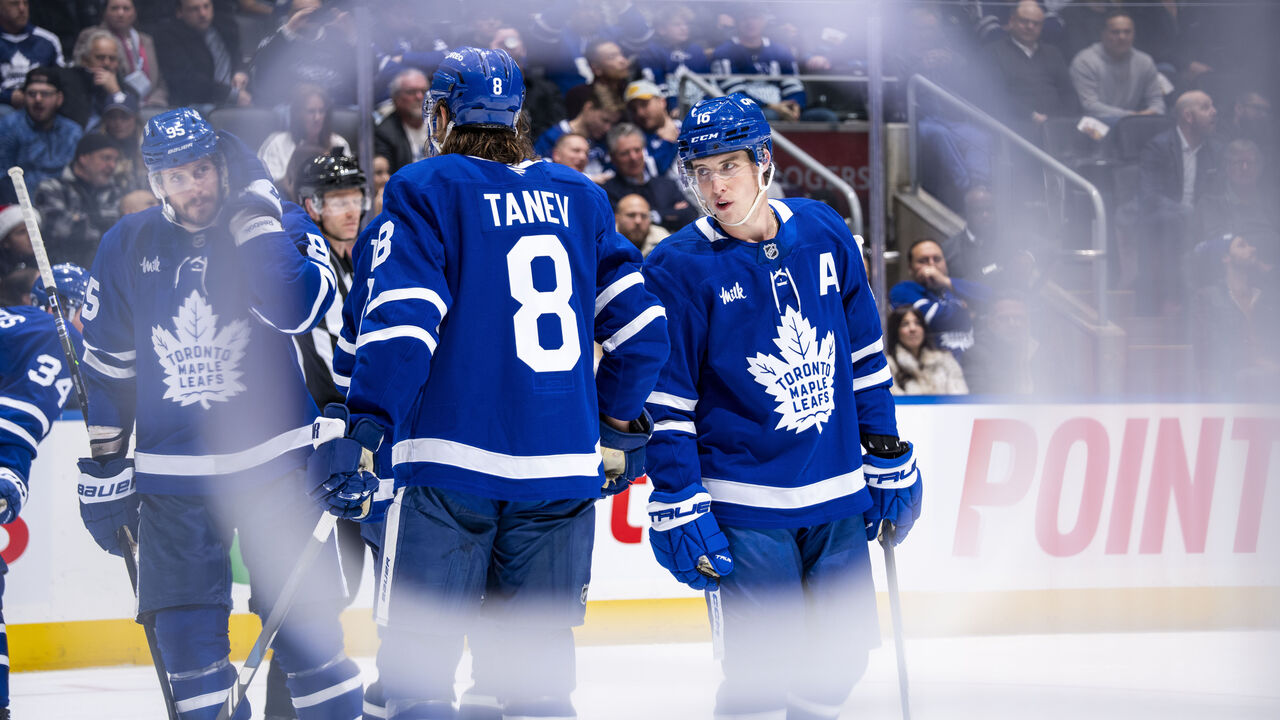
Two-plus months into the season, the Leafs have accumulated 40 points in 31 games - the exact same amount Keefe's Leafs registered in the first 31 games last year. The journey to bank those 40 points has looked markedly different, however, with Berube overhauling the team's playing style dramatically.
That's no exaggeration: Berube's Leafs are a borderline elite defensive squad. They're tied for the fifth-fewest goals against per game heading into Tuesday's slate thanks to tremendous goaltending, improved penalty killing, and smothering even-strength play. Toronto's leaped from 20th in the NHL to seventh in expected goals against per game at five-on-five action.
Aside from (totally fair) concerns about the injury histories of Stolarz and partner Joseph Woll, there are no major red flags to worry about on defense.
Gains made on one side of the puck may be impacting the other side negatively. The Leafs, whose 2.97 goals per game are tied with the Kraken for 19th in the league, have become a team that favors straightforwardness over creativity, dump-ins over rush attacks, and shot quantity over shot quality.
Take a look at four illustrative Sportlogiq metrics:
It seems almost impossible for a roster with so much juice to rank last in chances off the rush. But the coach clearly wants to minimize risk (pucks in deep, pucks on net with traffic - all of the cliches), and the players are more or less delivering. (Marner, a super crafty playmaker, is thriving in this new system, racking up 41 points in 31 games to tie for ninth in league scoring.)
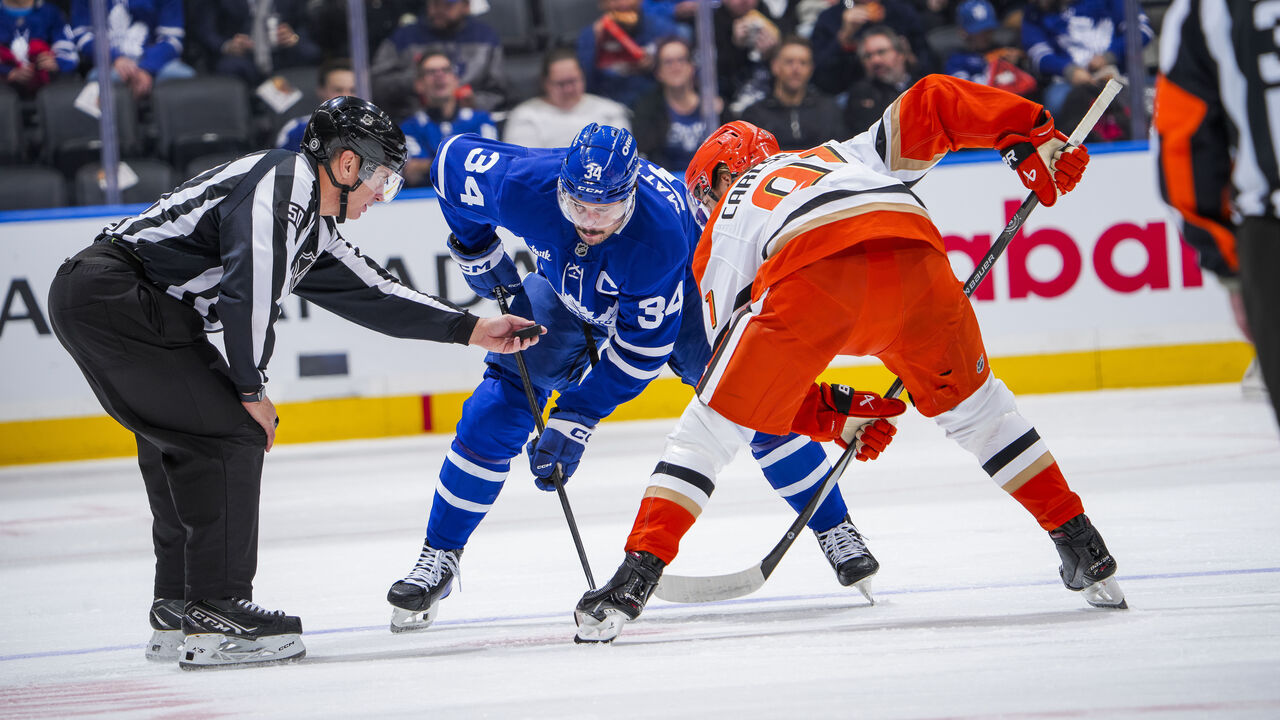
There's a "what if" scenario here. Matthews, who torched the league for 69 goals last season, missed nine games to deal with an undisclosed injury and, when healthy, hasn't been at the peak of his powers. (His 10 goals are tied for fourth on the team.) If Matthews gets going, and the goal-starved bottom two lines start pitching in, Toronto's attack may suddenly look half-dangerous.
Of course, none of these changes - good or bad - matter unless Berube's Leafs execute in the postseason. A chief reason why this group has failed is because the offensive drivers disappear for periods and games at a time. Does the new playing style unlock clutch performances, or does it make it even more unlikely Matthews, Marner, or someone else takes over a series?
Either way, general manager Brad Treliving is tasked with adding offensive pop ahead of the trade deadline (an offense-first third-line center and offense-first bottom-pair blue-liner, perhaps) while not subtracting from the defense.
KJ breakout SZN alert
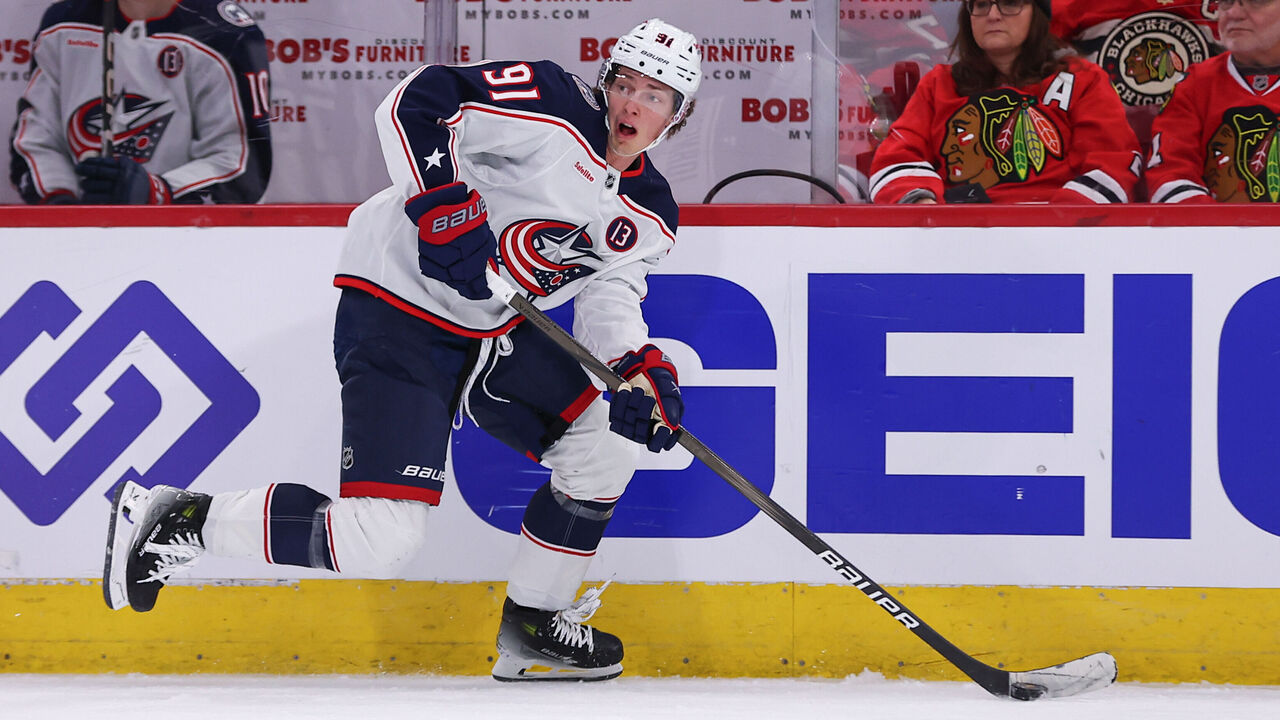
The Blue Jackets are this year's version of the 2023-24 Flyers - a young, hard-working squad unexpectedly in the mix for a playoff spot in mid-December.
Kent Johnson's breakout on the wing is a significant driving force.
Previously a perimeter player who almost exclusively created offense through pull-ups and east-west passing, Johnson's suddenly an unpredictable attacker. He's been dangerous off the rush and in tight to the goalie this season after a summer of work on skating speed and puck-protection moves.
Johnson, 22, is up to nine goals and nine assists in 17 games while logging a career-high 17:48 a night. He's bounced back well following a 14-game stint on the sidelines in late October and November to nurse an injured shoulder.
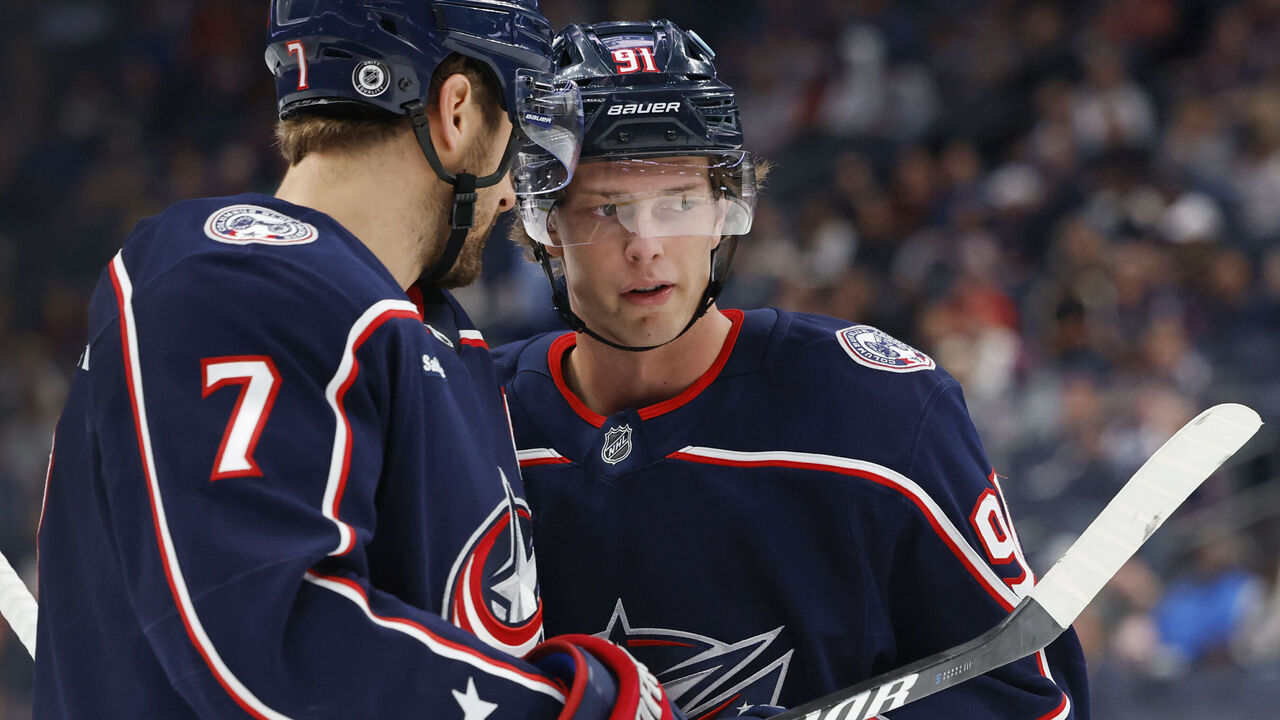
Three advanced statistics help paint a fuller picture of his improvements:
- 7 high-danger shots on goal (source: NHL Edge)
- 23 speed bursts over 20 mph (NHL Edge)
- 34 end-to-end rushes (Sportlogiq)
Johnson recorded eight high-danger shots on goal, 29 speed bursts over 20 mph, and 47 end-to-end rushes in 46 total games for Columbus last year. He's on pace to destroy those marks by his 46th game this season, with a projected 19 high-danger shots, 62 speed bursts, and 92 end-to-end rushes.
The combination of a clean slate and physical maturity has also contributed to the breakout, which isn't out of nowhere for the 2021 fifth overall pick and 40-point rookie. Johnson, who's thriving under new coach Dean Evason, has packed on 12 pounds since fall 2022. He's now listed at 6-foot, 180 pounds.
Johnson's in Year 1 of a three-year deal paying him $1.8 million annually. That deal, which leads him to restricted free agency, looks like a steal right now.
Storytime with Brian Burke
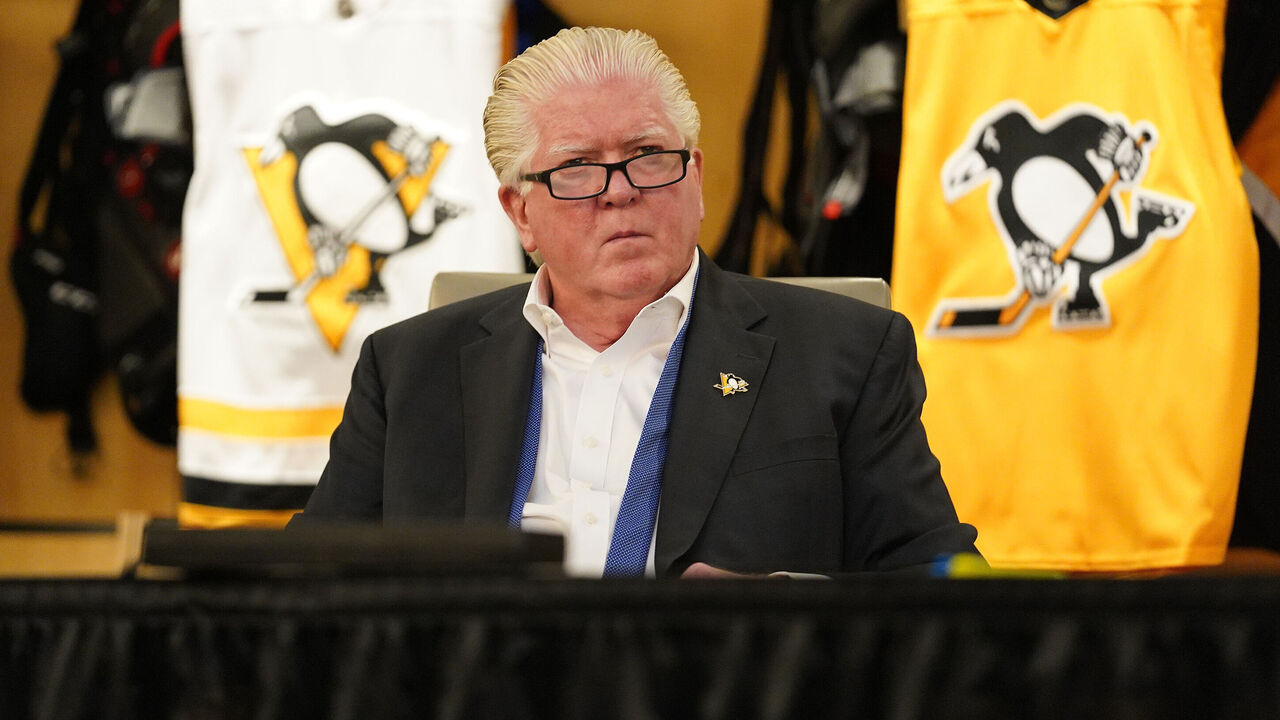
Love or hate his hockey commentary, Brian Burke is a fantastic storyteller. The former GM of four different NHL teams can command a room with his candor.
One of Burke's favorites is about his first draft as Canucks GM in 1999.
"It was the worst first round in the history of the league," he told a room of business professionals at the recent PrimeTime sports conference in Toronto.
Patrik Stefan was the first pick. Pavel Brendl went fourth overall. Between those two forgettable top prospects: the Sedin twins - Henrik and Daniel - at second and third. "We didn't even like the twins in their draft year. We went to the world juniors in Winnipeg, and they were very average," Burke said.
Thomas Gradin, Vancouver's Sweden-based amateur scout, called Burke later in the season to urge him to give the Sedins one last chance at the world championships in Norway. "OK, Thomas, I'll come over and watch, and we'll let this nonsense go. We're not drafting them," Burke recalled of his response.
He continued: "I saw one shift with these twins on the big ice, against men, and I was like, 'Oh my God, we have to get them both.' One shift cured me."
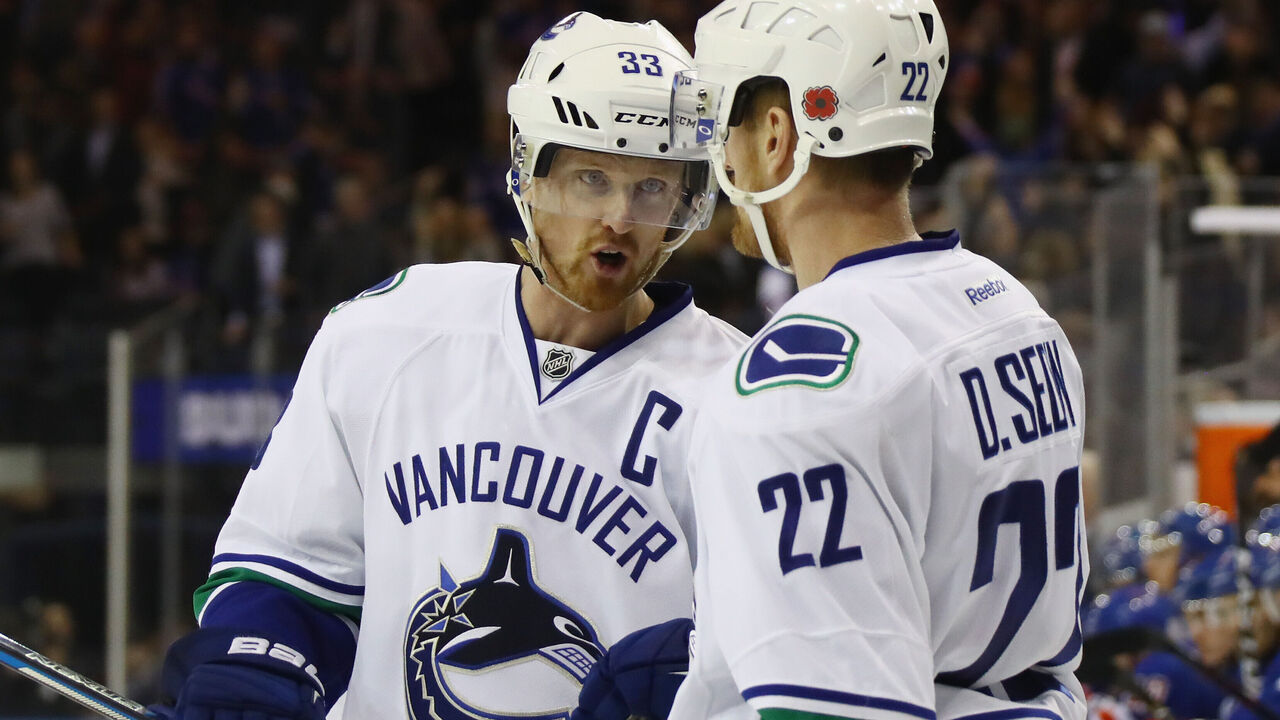
Once he actually gave the Sedins a chance, Burke quickly became enamored with their character. They lived in a house in Ornskoldsvik, Sweden, that had been in the Sedin family for 150 years - family guys. They were incredible athletes - soccer stars and workout fiends - and extremely respectful kids.
It took three trades, all registered on draft day, to land the second and third picks and convince the Thrashers, who were hosting, to select Stefan first.
- Trade 1: defenseman Bryan McCabe and Vancouver's first-round pick in 2000 to Chicago for fourth overall in 1999
- Trade 2: fourth overall in 1999 and two third-rounders in 1999 to Tampa Bay for first overall in 1999
- Trade 3: first overall in 1999 and a 2000 third-rounder to Atlanta for second overall and third overall in 1999
Burke fully understood how the twins tick in the season following their draft year. He flew to Europe to watch a Swedish Hockey League game, and ...
"They were just horseshit," Burke said. "I went over to Thomas Gradin after the game and said, 'Those guys better have the flu or I'm firing you before we leave this rink.' I went over to talk to them, and the twins said they had a calculus test earlier in the day. They stayed up until 4 a.m. studying and both did very well on the test. 'Great answer, great answer.'"
And the rest, as they say, is history. Hockey Hall of Fame history.
Quick hits
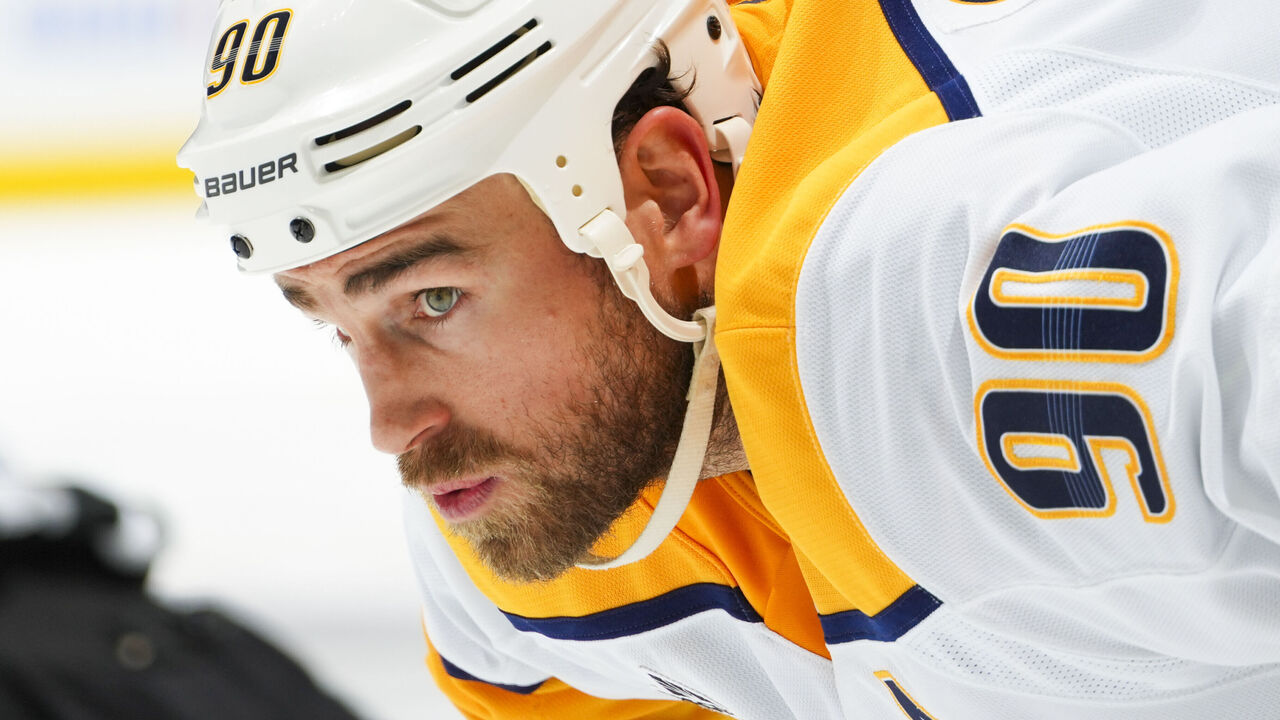
Last visor-less players: It dawned on me the other day that we're getting close to finding out the answer to a fun trivia question. Ryan O'Reilly, Matt Martin, Zach Bogosian, Jamie Benn, and Ryan Reaves are the only active NHLers playing without a protective shield on their helmets. (Visors became mandatory for new players a decade ago.) Martin, 35, will likely retire at the end of the season. Reaves, 37, is surely done once his contract expires in 2026. Bogosian, 34 and also a year away from free agency, might have one short-term contract left in him. That leaves Benn, 35, and O'Reilly, 33. My money's on O'Reilly - the younger, better player - becoming this generation's Craig MacTavish. I still can't believe MacT wasn't wearing a helmet in 1997! Will we look back in, say, 2050, and feel similarly about O'Reilly's visor-less ways?
MVP-caliber splits: The Canucks are a completely different team with Quinn Hughes on the ice. Vancouver owns 59% of the shot attempts, 59% of the scoring chances, and 63% of the goals at five-on-five with their captain between the boards, according to Natural Stat Trick. With Hughes on the bench, the club owns 43% of attempts, 43% of chances, and 44% of goals. Those are stunning, Hart Trophy-esque on/off splits. Hughes, who leads all NHL blue-liners with 1.17 points per game, has been dominant in all three zones while other key pieces (Thatcher Demko, J.T. Miller, Brock Boeser, Elias Pettersson) have been sidelined or struggling for huge chunks of the season.
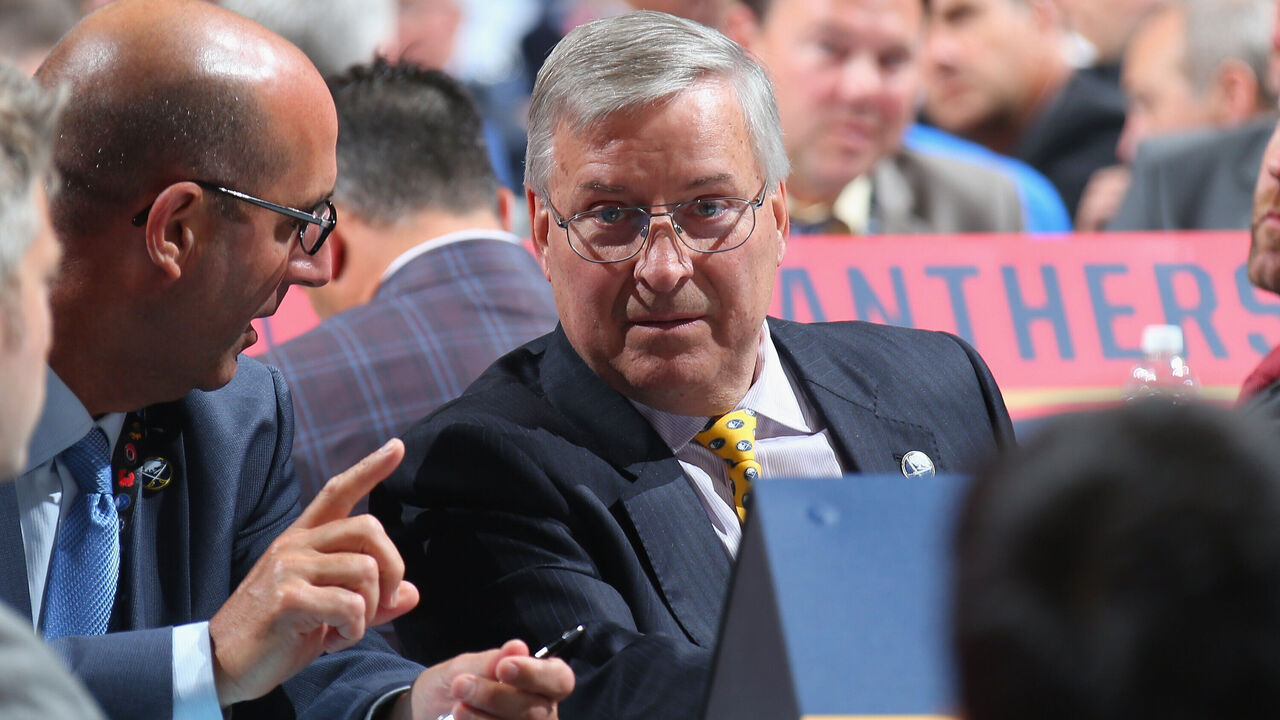
Sabres spiral: Buffalo owns the longest playoff drought in NHL history. The Lindy Ruff-coached team is 0-7-3 in its past 10 games and 11-16-4 on the season. Yep, the drought's headed for a 14th season. The one constant over 14 years isn't a front-office executive or coach or player - it's owner Terry Pegula. He's horrendous at hiring GMs, doesn't give his GMs enough resources to build a proper staff, meddles too much in day-to-day operations, pisses off superstar players like Jack Eichel, and refuses to spend to the upper limit of the salary cap. Those are five cardinal sins for an owner, especially in the NHL's hard-cap system. High state taxes and a lack of palm trees have little to do with the dysfunction in Sabres land. It starts at the top.
Not just book smart: Alex Kerfoot has shown over an eight-year career that he can assume the role of third wheel on pretty much any forward line. It's rare to be so versatile within one lineup, let alone three (Avalanche, Maple Leafs, now Utah). What makes Kerfoot different? "His brain. He's so smart," Utah head coach Andre Tourigny said of Kerfoot's hockey IQ. Kerfoot, who studied economics at Harvard, is almost always in the right position, skates and moves the puck well, never cheats for offense, and has enough offensive juice to hang with first-liners like Clayton Keller and Nick Schmaltz. He's a connector type during five-on-five action and a disrupter on the penalty kill. Kerfoot, 30, is third among NHL forwards in shorthanded ice time this season.
John Matisz is theScore's senior NHL writer. Follow John on Twitter (@MatiszJohn) or contact him via email ([email protected]).